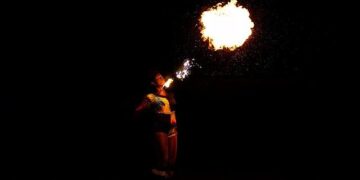Understanding the Uncommon and Destructive Fires in Los Angeles: A January Overview
Introduction to Los Angeles’ Fire Dynamics
January fires in Los Angeles are an unusual phenomenon that can have catastrophic consequences. While wildfires are commonly associated with the dry summer months, an increasing trend of fires during the winter period is raising concerns among environmentalists and urban planners. This article delves into the causes, impacts, and trends related to these infrequent yet devastating events.
Analyzing Recent Data on January Fires
Recent studies indicate a troubling rise in wildfire occurrences during January. According to data from the National Interagency Fire Center (NIFC), incidents during this month have increased by approximately 30% over the last decade compared to historical averages. The dry conditions typical for Southern California, combined with unseasonably high temperatures, create a volatile environment conducive to fire outbreaks.
Key Drivers Behind These Winter Fires
Climate Change Impact
One prominent factor contributing to these rare winter blazes is climate change. As global temperatures continue to rise, ecosystems face shifts that affect vegetation patterns and moisture levels. This results in drier landscapes even during traditionally wetter months like January.
Urban Development Pressures
Increased development within wildfire-prone areas exacerbates this issue further. Builders frequently encroach on natural spaces for housing and commercial projects without adequate measures for fire risk mitigation. Consequently, when fires do ignite, they spread rapidly through man-made structures that often replace natural barriers.
Environmental Consequences of Winter Wildfires
The repercussions of these winter fires extend beyond immediate property damage; they pose significant risks to local wildlife habitats as well as air quality. For instance, recent incidents have led to spikes in particulate matter pollution which contribute negatively towards respiratory health among residents – especially vulnerable populations such as children and elderly individuals.
Preparing for Future Incidents: Community Recommendations
Strengthening Fire Mitigation Strategies
To counteract the impacts of winter fires effectively requires enhanced community preparedness strategies alongside robust emergency response protocols. Local governments should invest more heavily into creating better firebreaks—clear areas devoid of vegetation—that can slow down fast-moving flames when disasters occur.
Promoting Public Awareness Programs
Moreover, fostering public awareness concerning fire safety is crucial; communities will benefit greatly from educating residents about managing defensible space around properties through practices like landscape maintenance or using non-combustible materials during construction efforts.
Conclusion: The Importance of Vigilance
As we witness unprecedented changes in our climate together with evolving development patterns throughout Los Angeles County—awareness about upcoming risks posed by seasonal wildfires must remain at forefront discussions within communities alike ensuring protection against future threats remains priority focus moving forward into uncertain seasons ahead!































